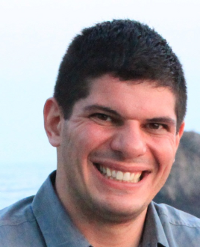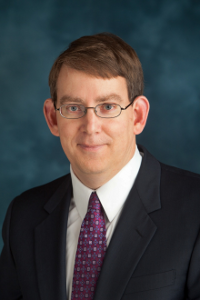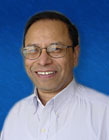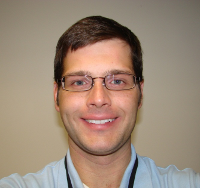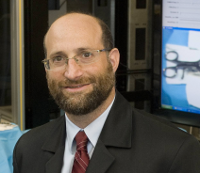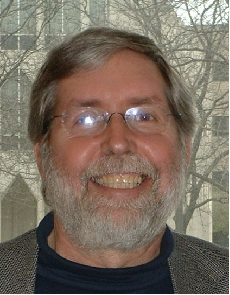| Technical Track A | |||
| 5:00pm - 6:00pm |
Mr. David Farnia The post recession economy has altered the relationship between commercial companies and universities.Company sponsored funding at the university has decreased and the expected return of any investment has increased.There are many benefits, however, for companies who interact with university research labs and this talk will discuss those opportunities. The benefits include recruiting, joint proposals, technology and prototype development, technology transfer, continuing education, and consulting.One typical example is the Industrial Program at the Wireless Integrated MicroSensing and Systems Research Center (WIMS^2 ) at the University of Michigan. At WIMS^2 there is a membership program for companies and a dedicated staff member who is responsible for facilitating interactions with the faculty and fulfilling requests from industry.The talk will discuss how both small and large companies can profitably use an industrialmembership program to recruit, transfer technology, write research proposals, and develop new technologies and products.
David Farnia graduated with a Masters in Electromechanical Engineering from the University of Wisconsin-Madison. He first started working on machine design using Soft Magnetic Composites (SMC) as a substitute for standard electrical steels. SMC is has three dimensional properties which are well suited for use in transverse flux and axial gap topologies. These machines required the use of three dimensional Finite Element Analysis to improve performance prediction accuracy. At this time David started working with the electromagnetic finite element analysis program called JMAG which is made by JSOL corporation. For the last 2 years, David has been working with JMAG's distributor, Powersys Solutions, to help develop and support JMAG in the United States. Chapter 2 - IEEE Vehicular Technology Society |
||
| 6:00pm - 7:00pm |
Andrew "Andy" Oliver Ph.D. The post recession economy has altered the relationship between commercial companies and universities. Company sponsored funding at the university has decreased and the expected return of any investment has increased.There are many benefits, however, for companies who interact with university research labs and this talk will discuss those opportunities. The benefits include recruiting, joint proposals, technology and prototype development, technology transfer, continuing education, and consulting.One typical example is the Industrial Program at the Wireless Integrated MicroSensing and Systems Research Center (WIMS^2 ) at the University of Michigan. At WIMS^2 there is a membership program for companies and a dedicated staff member who is responsible for facilitating interactions with the faculty and fulfilling requests from industry.The talk will discuss how both small and large companies can profitably use an industrialmembership program to recruit, transfer technology, write research proposals, and develop new technologies and products.
Andrew "Andy" Oliver received the B.S.E.E. degree with distinction from Iowa State University, and the M.S. and Ph.D. in Electrical Engineering from the University of Michigan. His industrial experience includes nine years at Sandia National Laboratories in Albuquerque, New Mexico, where he worked on the design, fabrication, and packaging of surface micro-machines. After this he contributed to ICx Ion Optics in Waltham, Massachusetts, where he designed MEMS infrared based gas detectors and developed a wafer-level vacuum package technology. He also has SBIR and 'startup company' experience. He taught a three-credit, graduate-level course on the packaging of MEMS devices at the University of New Mexico as well as courses for the Boston Section of IEEE. In 2011, he joined the University of Michigan's Center for Wireless Integrated Micro Sensing and Systems as the Research Liaison. Andy is a recipient of an R&D 100 award for one of the 100 most technology significant new products of 2008, has one patent, and has authored multiple journal papers, book chapters, and conference papers as well as being a senior member of IEEE.
Chapter 4 - IEEE Antennas & Propagation Society - Electron Devices Society - Microwave Theory and Techniques Society
|
||
| Technical Track B | |||
| 5:00pm - 6:00pm |
Ramasamy Uthurusamy Ph.D. Strategy-driven solution development and research-and-data-driven strategy formulation are keys to turn research results into useful applications. Based on personal observations, experiences, and assessment of emerging trends in academic and industrial research, this presentation will outline many real world applications of strategy and data driven research that illustrate innovative research and development that identify new opportunities and provide insight into better decision making.
Dr. Ramasamy Uthurusamy was General Director of Emerging Technologies, Information Systems and Services Division of General Motors Corporation. He received his Ph.D. from Purdue University. Prior to joining General Motors he was with Exxon Production Research Company where he was involved in applied AI research. He has taught at Purdue University and at the University of Idaho. His research interests and expertise span four major areas: Knowledge Discovery in Databases and Data Mining; Artificial Intelligence; Knowledge Management; and Advanced Web Technologies. He received the Distinguished Service Award from ACM SIGKDD for his active involvement in KDD from the beginning. He received the Charles McCuen Special Achievement Award from General Motors R&D Center for part of his work in GM-specific applications. He is a Senior Member of IEEE and Senior Member of AAAI and a Member of ACM and Sigma Xi . He was one of the 2002 Winter Olympics Torchbearers.
Chapter 1 - IEEE Signal Processing Society - Circuits & Systems Society - Information Theory Society
|
||
| 6:00pm - 7:00pm |
Adib Y. Nashashibi Ph.D. Seismic tests are frequently used in oil and gas-field explorations over the world, including regions that are characterized as arid- or desert-like regions. In those regions, a layer of dry sand often covers the underlying bedrock and its thickness varies from one area to the next. Seismic tests are usually successful in sandy areas where the sand layer thickness above the bedrock is low. The cost of these tests can be reduced significantly if the thickness of the sand layer above bedrock is known a priori. A dual-frequency, Interferometric, Synthetic Aperture Radar (InSAR) has been proposed as a means to map the thickness of the sand layer above bedrock over large areas of deserts and arid lands. The proposed dual-frequency InSAR consists of two systems: a high-frequency and a low-frequency InSAR system, both mounted on a single platform. The high-frequency InSAR is used to determine the height of the air/sand interface while the low-frequency InSAR is used to determine the height of the sand/bedrock interface. The thickness of the sand layer is then the difference between the two heights. The premise for using a high-frequency InSAR is that the radar backscatter return originates from the air/sand interface or slightly beneath it. On the other hand, a low-frequency InSAR will see minimal scattering from both the air/sand surface and sand particles. In addition, low propagation losses permit the low frequency signal to penetrate the sand layer and scatter back from the sand/bedrock interface. We will present the results of a phenomenological study that was conducted recently at the University of Michigan on using dual-frequency InSAR to map the thickness of the sand layer. The criteria for selecting the needed radar frequencies, bandwidth, and polarizations for both InSAR systems will be presented. Furthermore, a technique for focusing the SAR image underneath sand dunes will be discussed and a summary of radar system parameters will be presented. The presentation will include both theoretical analysis supported by experimental validation.
Adib Y. Nashashibi (S'82-M'95-SM'01) received the B.Sc. and M.Sc. degrees in electrical engineering from Kuwait University, Kuwait, in 1985 and 1988, respectively. He received the Ph.D. degree in electrical engineering from the University of Michigan, Ann Arbor, in 1995. He is presently an associate research scientist in the Department of Electrical Engineering and Computer Science, The University of Michigan at Ann Arbor. He has over 16 years of experience in radar system development and its applications, and in the phenomenology of wave propagation and scattering in random media. He is the author or co-author of more than 80 technical journal and conference papers. His research interests include microwave and millimeter-wave remote sensing, polarimetric radar calibration and measurement techniques, radar signal processing, bistatic radar phenomenology, wave propagation, and antennas. Dr Nashashibi serves as the chairperson of the IEEE Geoscience and Remote Sensing Society's local chapter in Southeastern Michigan. Chapter 3 - IEEE Aerospace & Electronic Systems Society - Communications Society |
||
| Technical Track C | |||
| 5:00pm - 6:00pm |
Mr. Matthew Jackson This presentation investigates the cause of preamplifier saturation, discusses the 1 dB compression point and considers the ramifications of collecting data with a saturated amplifier. Two common saturation analysis methods, the attenuator check and band-pass filter, are considered as ways to guard against preamplifier saturation. After a brief discussion on the amplifier's input signal and its composition, a time-domain measurement method, consisting of seven steps, is introduced as another way to prevent preamplifier saturation.
Matt Jackson received a BSE in Electrical Engineering in 2005 from the University of Michigan - Ann Arbor. He currently works in the EMC laboratory at DENSO International America, Inc. as a senior EMC test engineer. Matt is an iNARTE Certified Engineer and member of the IEEE. His hobbies include spending time with his wife, traveling, participating in church activities and fixing anything that is broken. Chapter 8 - IEEE EMC Society |
||
| 6pm - 7pm |
Kevin Bai Ph.D. The speaker will cover fundamental aspects of modern HEV powertrains. An overview of power electronic components (Inverter, DC-DC Converters, and Chargers) and electric motors will be provided. The technical details about HEV vehicle performance, drivability, fuel economy and emission standards are elaborated. HEV operating strategies and controls are explained in the light of meeting powertrain requirements. Examples from some popular HEV models are used to explain the current state of art of HEV powertrains and components. Potentials and challenges of PHEV and EREV are also discussed.
Hua Bai was born in Chifeng City, Inner-Mongolia, China in 1980. He received B.S. and Ph.D. degree in Department of Electrical Engineering of Tsinghua University, Beijing, China in 2002 and 2007, respectively. Bai was a post-doc fellow and research scientist in Univ of Michigan-Dearborn, USA, in 2007 and 2009, respectively. Now he is an assistant professor in Department of Electrical and Compurter Engineering, Kettering University, MI, USA. He is the director of Advanced Power Electronics Lab (APEL). From 2011 to 2012, Bai as PI received more than $520,000 research funds. His research interest is the modeling and design of power electronic systems, including variable speed motor drive system, high voltage and high power DC/DC converter, high-efficiency battery charger, renewable energy and hybrid electric vehicles. He published more than 30 peer-review IEEE journals and 15 conference papers. He holds 4 industrial patents.
Chapter 7 - IEEE Industry Applications Society - Power Engineering Society
|
||
| Professional Track D | |||
| 5:00pm - 6:00pm |
Juan Wachs Ph.D. The inclusion of robotics and control automation to support and augment surgical performance offers the promise of shorter operating times, higher accuracy and fewer risks compared with traditional, human-only surgery. In this talk, I will discuss current research in the area of surgical robotics and human-robot collaboration. The talk will be focused around a project that we are currently developing at Purdue, in which we have created the first multimodal robotic scrub nurse ( Gestonurse, ) for the operating room (OR). Gestonurse assists the main surgeon by passing surgical instruments, thereby releasing the surgical technician to perform other tasks. Such a robotic system has the potential to reduce miscommunication and compensate for understaffing. Implications of the introduction of surgical robots, as assistants rather than autonomous agents, will have sociological and technological effects that may transform healthcare as we know it today. The system discussed, as a case study, will include a robotic scrub nurse capable of recognizing non-verbal communication (hand gestures) and speech commands. We will present our findings about the effects of modality training on task completion time and their meaning in terms of future applications.
Dr. Juan Wachs is an Assistant Professor in the School of Industrial Engineering at Purdue University . He is the director of the Intelligent Systems and Assistive Technologies Lab (ISAT) and he is affiliated with the Regenstrief Center for Healthcare Engineering . He completed a postdoctoral training at the Naval Postgraduate School's MOVES Institute in the area of computer vision, under a National Research Council Fellowship from the National Academies of Sciences . His research interests include machine and computer vision, robotics, teleoperations, human robot interaction, and assistive technologies. Juan Wachs is a member of IEEE and the Operation Research Society of Israel (ORSIS) . He has published in journals including IEEE Transactions on Systems, Man, and Cybernetics, Journal of American Medical Informatics, Communications of the ACM, and the Journal of Robotic Surgery . He received his M.Sc. and Ph.D. in Industrial Engineering and Management from the Ben-Gurion University of the Negev .
Chapter 12 - IEEE Control Systems Society
|
||
| 6:00pm - 7:00pm |
Rachael Schmedlen, Ph.D. In 2004, the National Academy of Engineering published the "The Engineer of 2020", report, which called for engineering educators to anticipate changes in engineering practice required for maintaining the nation's economic competitiveness and adapt accordingly. In response, The University of Michigan Biomedical Engineering Department (UM-BME) has been dedicated to encouraging our students to become adaptive learners through innovative design and offer an avenue for industry exposure. To this end, we have developed a comprehensive BME Design program that exposes students to design throughout their student lifecycle, from first year undergraduates to graduate students. These design courses expose BME students to the design process and offer problem-based learning applied to real world problems while acquiring technical communication skills. The design sequence provides increasing independence and less structure with each course; Eng 100 enables first year students to work with a physician to develop a paper design of a novel diagnostic test, seniors in the capstone BME 450/499 course design, build, and test a prototype sponsored by a real client from engineering, medicine, or local industry, and graduate students in the BME 599 class collaborate with physicians to identify clinical needs, innovate novel solutions, and develop a commercialization plan. Additionally, BME 599 students are encouraged to apply for funding and compete in national design competitions. To date, over thirteen BME 450/499 projects have resulted in journal articles, national conference presentations, or additional grant funding and at least one patent has been generated. BME 599 design teams have received over $72,000 in project funding and recently a BME 599 team received first place in the 2011 BMEIdea national design competition.
Rachael Schmedlen is a Lecturer IV in the Biomedical Engineering Department at the University of Michigan. She holds a Bachelor of Science degree in chemical engineering from the University of Michigan and a Ph.D. in Bioengineering from Rice University . Over the past seven years, Dr. Schmedlen has played a critical role in evolving the U-M biomedical engineering undergraduate curriculum. Dr. Schmedlen teaches introduction to biomedical engineering for first year students, a biomedical engineering laboratory, and several undergraduate design courses. In addition to education, she is also involved in course advising for undeclared engineering undergraduates.
Chapter 11 - IEEE Engineering in Medicine and Biology Society
|
||
| Technical Track E | |||
| 5:00pm - 6:00pm |
Robert G. Reynolds Ph.D. Intelligence in virtual worlds and computer games is often at the individual level. This is because the techniques used tend to favor the acquisition of knowledge for individual agents. Here, we describe how Cultural Algorithms, one of several socially motivated machine learning algorithms, can be used to incorporate both individual and social knowledge into a virtual world. We will demonstrate through a series of real world examples how this can be achieved. The examples are drawn from ancient, modern, and imaginary worlds. The examples from ancient worlds include the "Lake Huron Land Bridge Project", the emergence of ancient urban centers, the disappearance of the ancient Anazazi Pueblo Indians. The examples from modern systems include automobile racing, emergence of social networks, and engineering design. We will also discuss gaming systems as well including that of SuperMario, and Starcraft. While on the surface vastly different, all of these examples exhibit a "social fabric" in which social intelligence can be embedded.
Dr. Robert G. Reynolds received his Ph.D. degree in Computer Science, specializing in Artificial Intelligence from the University of Michigan, Ann Arbor. He is currently a professor of Computer Science and director of the Artificial Intelligence Laboratory at Wayne State University. He is an Adjunct Associate Research Scientist with the Museum of Anthropology at the University of Michigan-Ann Arbor, a member of the Complex Systems Group at the University of Michigan-Ann Arbor, and is a participant in the University of Michigan - Wayne state University NSF IGERT program on Incentive-Based Design. His interests are in the development of computational models of cultural evolution for use in the simulation of complex organizations and in computer gaming applications. Dr. Reynolds produced a framework, Cultural Algorithms, in which to express and computationally test various theories of social evolution using multi-agent simulation models. He has applied these techniques to problems concerning the location of ancient hunting sites beneath Lake Huron, the origins of the state in the Valley of Oaxaca, Mexico, the emergence of prehistoric urban centers, the origins of language and culture, and the disappearance of the Ancient Anazazi in Southwestern Colorado using game programming techniques. He has co-authored three books; Flocks of the Wamani (1989, Academic Press), with Joyce Marcus and Kent V. Flannery; The Acquisition of Software Engineering Knowledge (2003, Academic Press), with George Cowan; and Excavations at San Jose Mogote 1: The Household Archaeology (2005, Museum of Anthropology-University of Michigan Press), with Kent Flannery and Joyce Marcus. He has received funding from both government and industry to support his work. He has published over 250 papers on the evolution of social intelligence in journals, book chapters, and conference proceedings. The journals include IEEE Computer, IEEE Computational Intelligence, Complexity, Scientific American, IEEE Transactions on Evolutionary Computation, IEEE Transactions on Systems, Man, and Cybernetics, IEEE Software, Communications of the ACM, and the Proceedings of the National Academy of Sciences. He is currently an associate editor for the IEEE Transactions on Artificial Intelligence in Games, IEEE Transactions on Evolutionary Computation, International Journal of Swarm Intelligence Research, International Journal of Artificial Intelligence Tools, International Journal of Computational and Mathematical Organization Theory, International Journal of Software Engineering and Knowledge Engineering, and the Journal of Semantic Computing. He serves on the IEEE Technical Committee on Evolutionary Computation, the IEEE Technical Committee on Computational Intelligence in Games, and the IEEE Systems, Man, and Cybernetics technical committee on Soft Computing. Recently his groups from the Artificial Intelligence Laboratory have designed several award winning game controllers using Cultural Algorithms. They won the IEEE Super Mario Competition at the 2010 IEEE World Congress on Computational Intelligence and placed 2nd in the IEEE Car Racing Competition at the 2008 IEEE World Congress on Computational Intelligence among others.
Chapter 15 - IEEE Systems, Man, & Cybernetics Society
|
||

